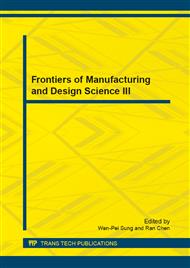p.259
p.263
p.268
p.272
p.277
p.283
p.288
p.292
p.297
The Analysis for Mechanical Response of 16MnR Steel under Single-Tank Pool Fire
Abstract:
Flammable liquid storage tanks could collapse easily and cause the accident spread rapidly in the high-temperature environment of pool fire, because pressure in the tank rises and the yield strength of wall decrease.So it is great significance to study the development of wall material under high temperature for the safety of flammable liquids tank farm. Taking 1,2- dichloropropane storage tank for example, based on the methods of heat transfer and numerical simulation, the mathematical model for thermal response of wall material 16MnR steel is builded to analyse the mechanical response of 16MnR steel under pool fire. When a pool fire of single tank took place in tank farm, the 1,2-dichloropropane was heated and gasitied that cause pressurizing, while the mechanical property of 16MnR steel weakened. By the finished model, this paper calculated the fail time of wall is 28.6min;failpoint of pressure is 2.065MPa;failpoint of temperature is 245°C,while temperature on heating surface of wall is 700-800 °C
Info:
Periodical:
Pages:
277-282
Citation:
Online since:
December 2012
Authors:
Price:
Сopyright:
© 2013 Trans Tech Publications Ltd. All Rights Reserved
Share:
Citation:


